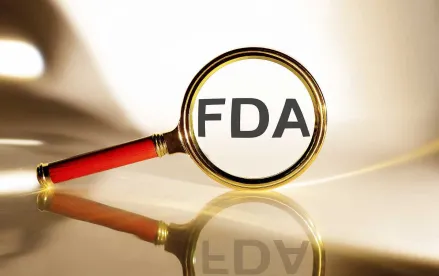On June 27, 2023, the Food and Drug Administration (FDA) issued its final guidance for the presentation of “Quantitative Efficacy and Risk Information” in direct-to-consumer (DTC) promotional labeling and advertisements for prescription drug, biological products, prescription animal drugs, and OTC animal drugs (collectively, “Promotional Communications”).[1] As identified in both the 2018 Draft Guidance and this final guidance, the FDA has seen an increasing trend of quantitative presentations of efficacy and risk in Promotional Communications submitted to the Agency. OPDP has been taking a close look at these types of claims, focusing on quantitative data in in their only untitled letter of 2023. As further discussed in our June blog post, in their letter to Xeris Pharmaceuticals, OPDP raised concerns regarding percentages that overstated the efficacy of the drug, Recorlev® (levoketoconazole) by omitting necessary context needed to understand the quantitative data.[2]
While firms are required to present information in a truthful and non-misleading manner, FDA cautions that they should also “consider how to best convey information about a drug’s efficacy and risks so the audience understand the information.”[3] Presenting quantitative (i.e., numerical) data – particularly in a manner that a general consumer audience can easily understand – can be challenging. Given the benefits of quantitative presentations of data in Promotional Communications, the FDA issued this guidance to help guide firms[4] through some common challenges associated with choosing quantitative presentations and provide recommendations to facilitate the most effective presentation.
FDA’s recommendations cover four major topics, with key takeaways summarized below:
1. Include Information about the Control Group
As applicable, firms should provide quantitative information from both the treatment group and the relevant control group, and such presentations “should accurately describe the comparator used in the control group.”[5] As demonstrated in the example below, if a firm has provided quantitative data about their treatment group (68% of patients who received Drug X plus a sulfonylurea experienced a reduction in blood glucose levels), they should provide information about the control group as well. This information should include a description of the comparator that was used in the control group (patients treated with sulfonylurea alone) and the corresponding data point (33% of patients experienced a reduction in blood glucose levels).
Example: “In a clinical trial of 173 participants, 68% of patients who were treated with Drug X plus a sulfonylurea experienced a reduction in blood glucose levels, while 33% of patients treated with sulfonylurea alone experienced a reduction in blood glucose levels.”[6]
2. Provide Absolute Probabilities
Quantitative efficacy and risk information should be provided in absolute probability measures. This includes both absolute frequencies (e.g., 57 out of 100) and percentages (57%). FDA emphasized that absolute probability measures are preferable over relative measures (i.e., statements like “33% reduction in symptoms” or “3 times as likely to experience a side effect”) given that consumers have to perform calculations to interpret relative frequencies, making it more difficult to accurately and immediately identify a drug’s effects and risks.
If a firm chooses to include relative frequencies, FDA recommended that such Promotional Communications should also display “corresponding absolute probability measures . . . prominently and in direct conjunction with the relative frequency measure.”[7] In the example below (provided by FDA in the guidance), the relative percentage (reduced the risk of stroke by 50%) is followed directly by the absolute percentage (1% of patients treated with Drug X had a stroke, compared to 2% of patients in the control group).
Example: “In a clinical trial, Drug X reduced the risk of stroke by 50% (1% of patients treated with Drug X had a stroke, compared to 2% of patients in the control group).”
3. Be Consistent, Use Whole Numbers and Don’t Minimize Risks
FDA also provided various recommendations relating to the formatting of quantitative efficacy or risk probabilities in Promotional Communications, including:
Present information in the same numerical format throughout the Promotional Communication (e.g., either in absolute frequencies or percentages). For example, when providing data for both the treatment group or control group, the same format should be used for each statistic.
Example: “In patients treated with Drug X, 9 out of 10 patients experienced moderate symptom relief, compared to 3 out of 10 patients who received placebo.” Alternatively: “In patients treated with Drug X, 90% of patients experienced moderate symptom relief, compared to 30% of patients who received placebo.”
Consistently characterize efficacy or risk information quantitatively throughout a promotional piece. Do not alternate between qualitative descriptors (e.g., the majority of patients, less than half of patients) and quantitative data (e.g.,54% of patients, 28% of patients).
Example: “The majority of patients (54%) experienced moderate symptom relief after treatment with Drug X. Less than half of patients (28%) treated with placebo experienced moderate symptom relief.” Alternatively: “54% of patients treated with Drug X experienced moderate symptom relief . . .,” “. . . 28% of patients treated with placebo experienced moderate symptom relief. . . .”
Use frequencies with the same denominator when providing more than one absolute frequency.[8]
Consider using denominators that are multiples of 10.
State probabilities in whole numbers to the extent that doing so accurately reflects the numerical value being described.
Present quantitative probability information about a particular risk in a manner that does not minimize or detract from information about the severity of the risk. Firms should avoid presenting information in a way that focuses on the low probability of a serious risk occurring, characterizing the probability of a risk as insignificant or suggesting that a risk is not important based on the probability of it occurring. For example, avoid qualifiers such as “only” to describe risks (e.g., “In a clinical trial, only 2% of patients experienced bleeding that required hospitalization.”).
4. Use Visual Aids Wisely
Visual aids such as graphs, tables, and icon arrays can be a useful tool to present quantitative data in a way that a consumer audience can easily understand by “illustrating patterns, summarizing the data, and reducing the amount of mental calculations the consumer must perform to extract meaning from the quantitative information.”[9] FDA’s recommendations include:
Choose the type of visual aid that best conveys the information you are trying to present. For example, use a bar graph for comparing probabilities and use a line graph to illustrate trends and changes.
Explain the purpose of the visual aid clearly and accurately.
Include and label the following elements, as applicable: title, header, captions, variables, scales, axes.
Make sure your visual displays data proportionately and to scale.
Include visual representations of both the numerator (e.g.,the people who experienced the effect) and denominator (e.g.,the total people studied) of ratios or frequencies. When possible, illustrating the denominator as a multiple of 10 may make the visual easier to understand.
Conclusion and Takeaways
In comparing this final guidance to the 2018 Draft Guidance, the vast majority of changes were additional points of clarification or minor revisions. To be sure, a few updates stand out as potentially important.
First, the biggest change from the 2018 Draft Guidance is the ordering of the list of topics; previously, the recommendation to include both treatment and control groups appeared at the end of the list whereas it now appears first. This change may be suggestive of FDA priority in ensuring the control group is accurately presented and underscores the importance of including such statements for customer comprehension. It makes sense that failure to include information of a control group can render data illegible or useless to the consumer, not to mention that such a presentation is likely misleading and potentially incorrect in a given context. Providing a point of comparison with control group data helps the consumer to contextualize the information and better understand the extent of the benefit or risk of the relevant drug.
Additionally, in contrast to the 2018 Draft Guidance, FDA specifically cautions manufacturers to pay attention to the media they are using when presenting quantitative data, stating: “[f]irms should consider the amount of space or time available and any other factors specific to the media type in which their presentation will appear when determining how to present quantitative efficacy or risk information in their DTC promotional communications so that consumers have an opportunity to attend to and understand it.”[10] This is particularly relevant when using social media that may significantly limit the time and number of characters available. Based on its previous guidance regarding social media promotion,[11] OPDP will likely not excuse a manufacturer’s failure to present a drug’s efficacy and risks in an accurate and understandable manner simply because of the platform’s space or character limitations.
As OPDP continues to invest resources and rely heavily on social science research to inform their guidance, we can continue to view it as an indication of OPDP’s focus and what areas they may choose to issue guidance in next. We can expect to see a continued concentration on DTC promotion as OPDP continues to focus much of its social science research on this area,[12] examining how consumers understand and make decisions based on the promotional information they receive about prescription drugs. This focus can also inform enforcement action. We have already seen this in OPDP’s only untitled letter of the year, which focused on consumer websites. Firms would be wise to take this into account and pay particular attention to their Promotional Communications directed at consumers.
FOOTNOTES
[1] U.S. Food & Drug Admin., Presenting Quantitative Efficacy and Risk Information in Direct-to-Consumer (DTC) Promotional Labeling and Advertisements Guidance for Industry (June 2023), available at Presenting Quantitative Efficacy and Risk Information in Direct-to-Consumer (DTC) Promotional Labeling and Advertisements | FDA.
[2] See Untitled Letter to Xeris Pharmaceuticals, available at Untitled Letter Recorlev (fda.gov).
[3] Presenting Quantitative Efficacy and Risk Information Guidance,at 2.
[4] Firms are defined in the guidance to include “manufacturers, packers, and distributors of prescription drugs (as described in the[e] guidance) and over-the-counter animal drugs, including their representatives.” Id. at 2, n. 5.
[5] Id. at 4.
[6] Id. at 4 (emphasis added).
[7] Id. at 5.
[8] “Where a whole number would not be appropriate, firms should express the value as is (e.g., as a decimal) instead of rounding the value up or down to the nearest whole number. For example, firms should not round probabilities less than 1 to the nearest whole number. Similarly, firms should not round probabilities to the nearest whole number when comparing probabilities that are so close in value that the difference between the probabilities would be lost if the values were expressed as a whole number or numbers.” Id. at 6.
[9] Id. at 8.
[10] Id. at 3.
[11] “If a firm concludes that adequate benefit and risk information, as well as other required 216 information, cannot all be communicated within the same character-space-limited 217 communication, then the firm should reconsider using that platform for the intended 218 promotional message.” U.S. Food & Drug Admin., Internet/Social Media Platforms with Character Space Limitations— Presenting Risk and Benefit Information for Prescription Drugs and Medical Devices (June 2014), available at Draft Guidance for Industry: Internet/Social Media Platforms with Character Space Limitations – Presenting Risk and Benefit Information for Prescription Drugs and Medical Devices (fda.gov).
[12] OPDP currently has three research projects awaiting peer review and publication, all focusing on direct-to-consumer promotion (Disease Awareness and Prescription Drug Promotion on Television; Experimental Study of DTC Advertising Directed at Adolescents; Study of Oncology Indications in Direct-to-Consumer Television Advertising). See U.S. Food & Drug Administration, Research Pending Peer Review and Publication | Office of Prescription Drug Promotion (OPDP) Research, available at Research Pending Peer Review and Publication | Office of Prescription Drug Promotion (OPDP) Research | FDA.




 />i
/>i

